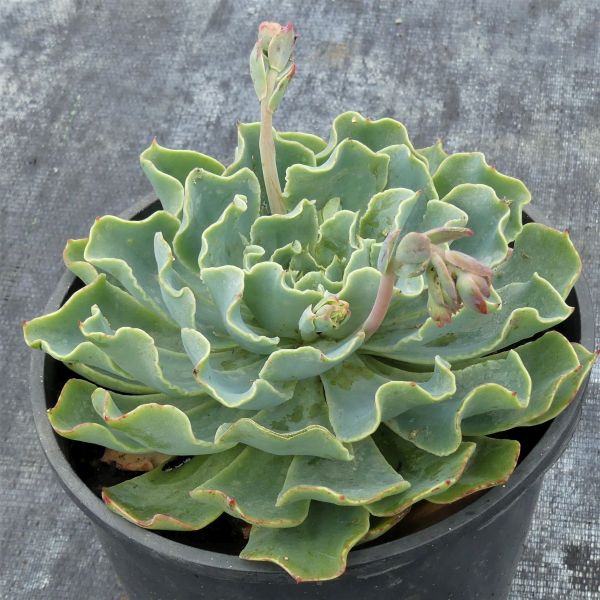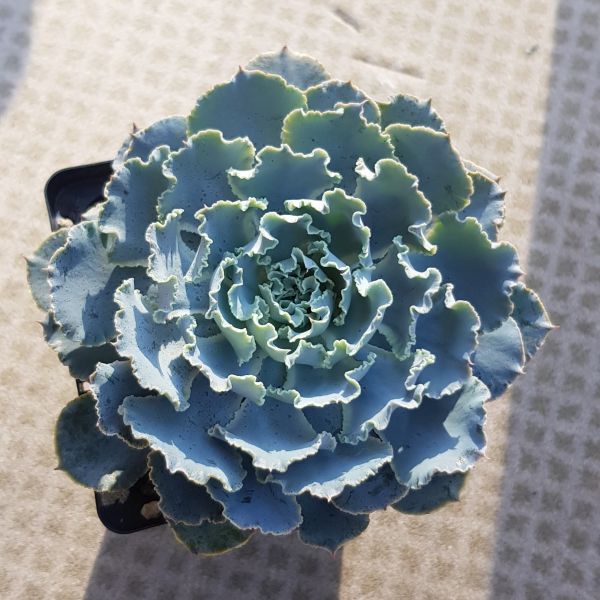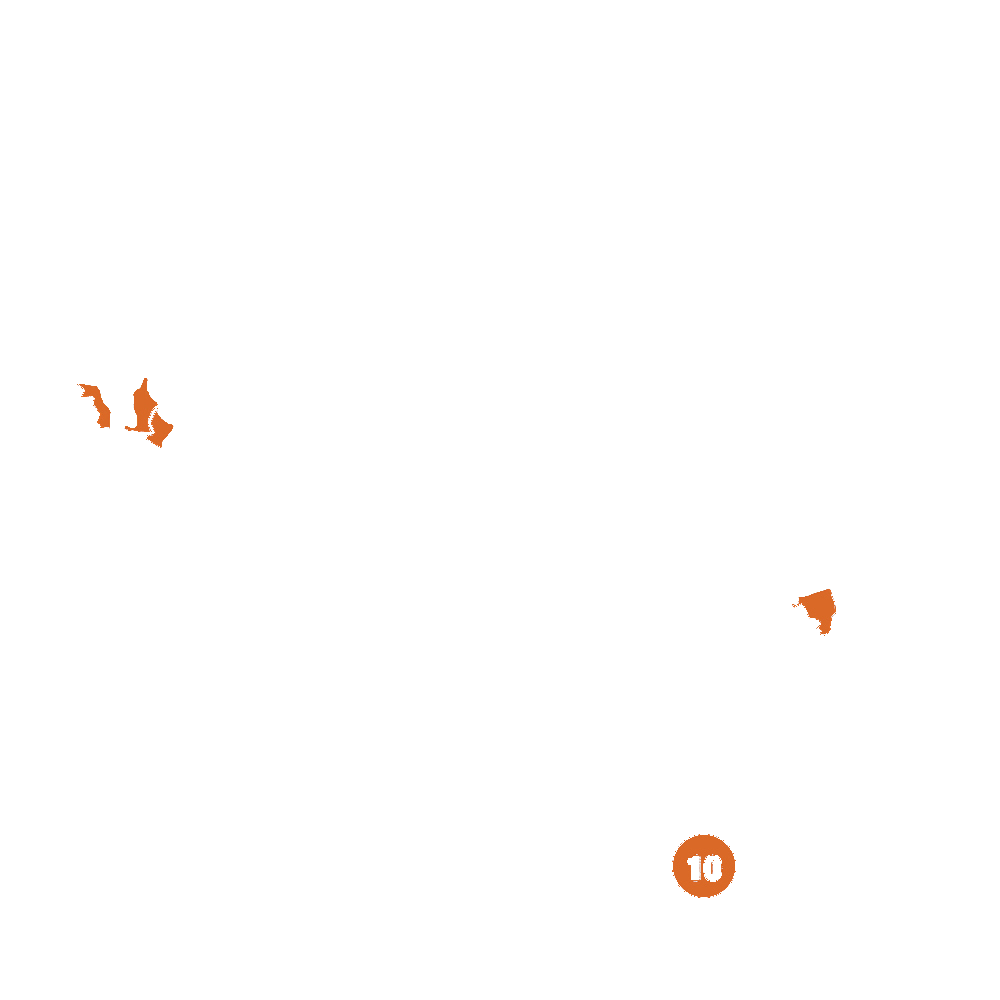

Echeveria Truffles
Echeveria shaviana 'Truffles'
85 reviews
Echeveria Truffles
Echeveria shaviana 'Truffles'
85 reviews
- Unique texture and color combination
- Low maintenance and drought tolerant succulent
- Ideal for indoor or outdoor settings
- Recommended by landscape designers for optimal fit in real yards
$65.00
$93.00
30% Off
- Ships to in 7-10 Days
- Free Shipping Over $150
- Plant Arrival Guarantee
- In Stock
- Free Plant Consult
$200 - Landscape-Approved: Every Plant We Sell Comes With Design Expertise Behind It
1 Gallon
We are sorry, product is currently out of stock due to seasonal availability. Please check the "Related plants available in your area" section below
Not just beautiful - intentionally selected by ShrubHub's 3D landscape design team to fit real-world spaces and maximize yard potential.
Why Echeveria Truffles?
Echeveria Truffles is a popular cultivar of Echeveria shaviana. It is valued for its unique red and green coloration, which resembles the surface of a truffle. This succulent has thick, fleshy leaves that form a rosette shape, and it produces pink flowers in the summer. Echeveria Truffles is easy to grow and maintain, making it a great choice for indoor or outdoor gardens. Its striking appearance and low maintenance needs make it a favorite among succulent enthusiasts.
Sunlight
Echeveria Truffles requires bright, indirect sunlight or partial shade. Direct sunlight can cause the plant to become sunburned and develop leaf discoloration. Providing the right amount of light is crucial for the overall health and growth of this succule
Watering
Echeveria Truffles has low watering requirements. It is a succulent plant that is drought-tolerant and prefers infrequent but deep watering. Overwatering can cause root rot and other issues, so it is essential to allow the soil to dry out between waterings
Fertilizing
Echeveria Truffles require a balanced fertilizer with equal parts nitrogen, phosphorus, and potassium. It is recommended to apply a slow-release fertilizer every three months, following the manufacturer's instructions, to provide adequate nutrients for hea
The Echeveria Truffles, are a captivating succulent that will effortlessly elevate your garden. Thriving in USDA hardiness zones 9 to 11, this plant is perfect for warm climates.
With its striking rosette shape and deep red tones, the Echeveria Truffles is a true head-turner, adding a touch of sophistication to any landscape. This versatile succulent is ideal for rock gardens, containers, or as a centerpiece in your flower beds. It thrives in well-drained soil and requires minimal maintenance, making it a hassle-free choice for busy gardeners. In addition, the Echeveria Truffles is known for its resilience and ability to withstand drought conditions. With its unique leaf patterns and the ability to produce offsets that can be propagated, this plant guarantees endless beauty and creativity. Enhance your outdoor space with the allure of Echeveria Truffles and enjoy a hardy succulent that is sure to impress.
Moreover, the Echeveria Truffles is not only visually stunning but also offers a delightful surprise when cared for properly. During the summer months, this remarkable succulent produces charming clusters of bright orange flowers that attract pollinators, adding a burst of color and life to your garden. Its ability to thrive both indoors and outdoors makes it an excellent choice for adding beauty to your home decor or outdoor landscape. Whether you're an experienced gardener or a beginner, the Echeveria Truffles is a must-have succulent that will bring joy and intrigue to your space throughout the year.
Plant Information:
| Botanical Name: | Echeveria shaviana 'Truffles' |
| USDA Zones: | 9 - 11 |
| Water: | Low |
| Exposure: | Full Sun |
| Soil Needs: | Well Drained |
| Mature Height: | 4 - 6 inches |
| Mature Spread: | 6 - 8 inches |



Pollination Info
Pollination Information for Echeveria Truffles
Echeveria shaviana 'Truffles' is a succulent plant that produces small, bell-shaped, pink flowers. Here are some important facts about its pollination:
- The plant is self-fertile, which means it can produce seeds without the need for cross-pollination.
- However, cross-pollination can still occur naturally through insects, such as bees and butterflies.
- To increase the chances of cross-pollination, you can manually transfer pollen from one flower to another using a fine paintbrush or cotton swab.
- The best time to pollinate Echeveria Truffles is in the morning, when the flowers are fully open and the stigma is receptive to pollen.
- After pollination, the plant will produce a seed pod that contains numerous small, black seeds.
- To propagate the plant, you can collect the seeds and sow them in well-draining soil.
FAQ
Frequently Asked Questions about Echeveria Truffles (Echeveria shaviana 'Truffles')
What is an Echeveria Truffle?
Echeveria Truffles (Echeveria shaviana 'Truffles') is a hybrid succulent plant with rosettes of fleshy, greenish-gray leaves and pinkish-red edges. It is named for its resemblance to a delicious chocolate truffle.
How do I care for my Echeveria Truffle?
- Water: Echeveria Truffles prefer well-drained soil, so be sure to allow the soil to dry out completely before watering. Water deeply and infrequently, only when the soil is completely dry.
- Light: Echeveria Truffles require bright, indirect sunlight. Inadequate sunlight can cause the leaves to stretch and become leggy, while too much sunlight can cause sunburns.
- Temperature: Echeveria Truffles thrive in temperatures between 60-80°F. Protect them from extreme temperatures and frost.
- Soil: Use a well-draining soil mix specifically formulated for succulents and cacti.
- Fertilizer: Echeveria Truffles do not require frequent fertilization, but you can feed them with a balanced fertilizer every 4-6 weeks during the growing season.
How often should I repot my Echeveria Truffle?
Echeveria Truffles grow slowly and do not require frequent repotting. You should only repot them when they outgrow their current container or the soil becomes compacted.
Why are my Echeveria Truffle's leaves turning brown and soft?
Brown and soft leaves are a sign of overwatering. Echeveria Truffles do not tolerate too much water and require well-draining soil. Be sure to allow the soil to dry out completely before watering and adjust your watering schedule accordingly.
How do I propagate my Echeveria Truffle?
Echeveria Truffles can be propagated by leaf or stem cuttings. Leaf cuttings should be allowed to callus over for a few days before being placed in a well-draining soil mix. Stem cuttings should be allowed to dry out for a few days before being planted in soil.
Is Echeveria Truffle toxic to pets?
Echeveria Truffles are considered non-toxic to pets and humans.
Planting & Care
Planting & Care for Echeveria Truffles
Planting
- Choose a well-draining potting mix with added perlite or sand for optimal drainage.
- Fill a pot with the soil mix, leaving enough space for the plant. The pot should be slightly larger than the plant's root ball.
- Gently remove the plant from its container and loosen the roots if they appear pot-bound.
- Place the plant in the prepared pot and fill in any gaps with additional soil mix.
- Water the plant thoroughly, making sure the soil is evenly moist.
- Place the pot in an area with bright, filtered sunlight. Echeveria Truffles thrive in temperatures between 60-75°F.
Care
- Water the plant only when the top inch of soil feels dry to the touch. Overwatering can cause root rot and other issues.
- Provide regular fertilization with a succulent or cactus-specific fertilizer during the growing season in spring and summer.
- Prune any dead or damaged leaves to promote healthy growth and prevent disease.
- Echeveria Truffles do not require frequent repotting and can remain in the same pot for several years.
- Protect from frost and harsh temperatures in winter months by moving the plant indoors or covering it.
Check Out These Verified Customer Reviews:
Customer Reviews
4.6 out of 5 based on 85 reviews
Thank you! Your review has been submitted.
Fast shipping, well packed
High quality succulent
Thriving in my garden
Item has been added to your cart.


